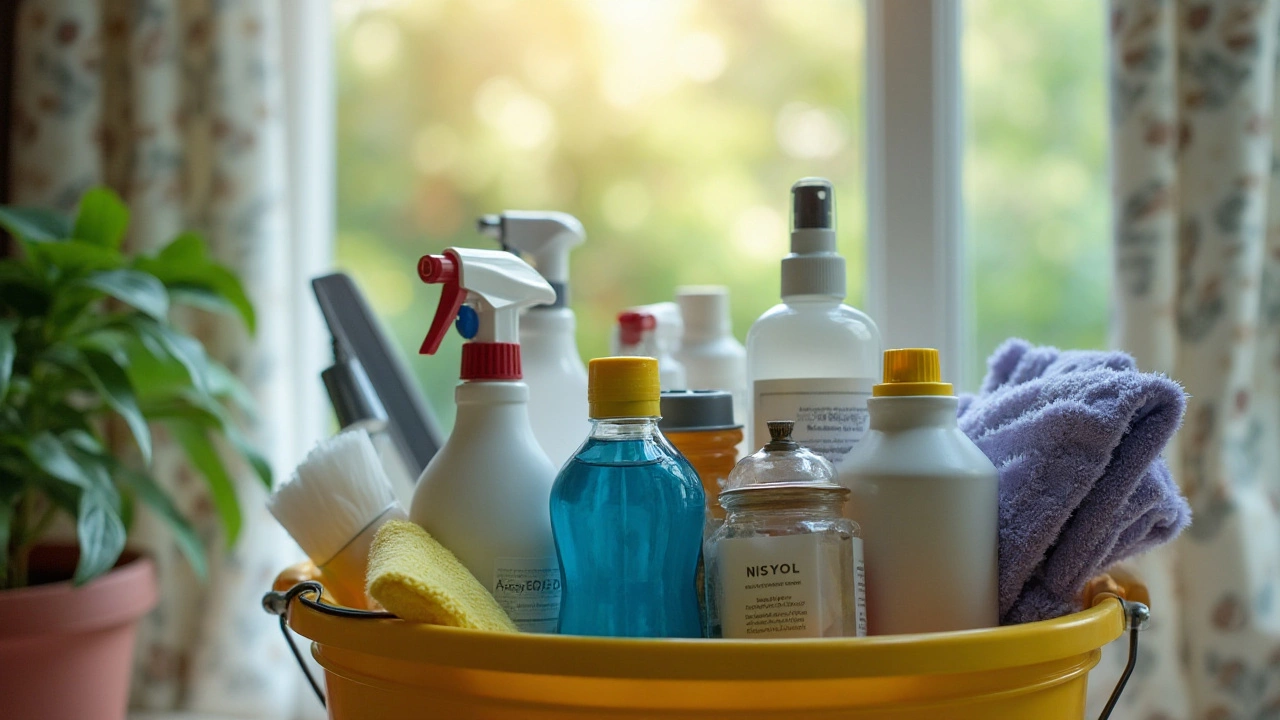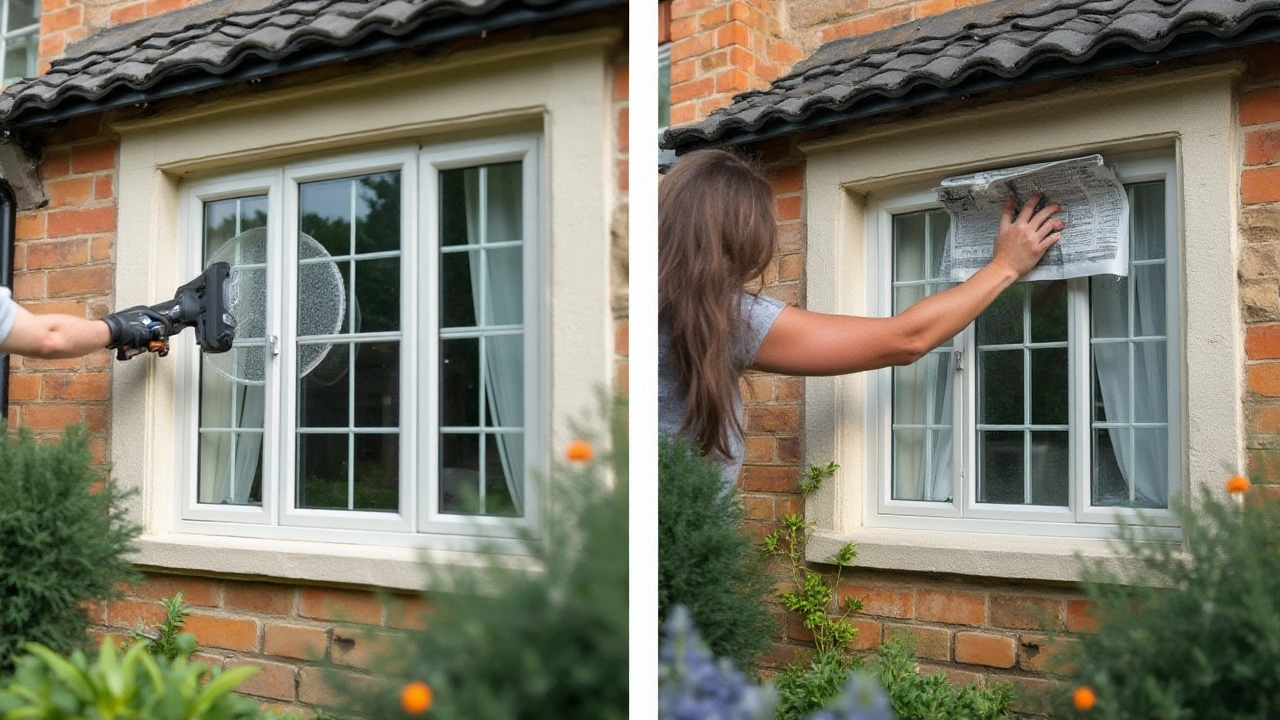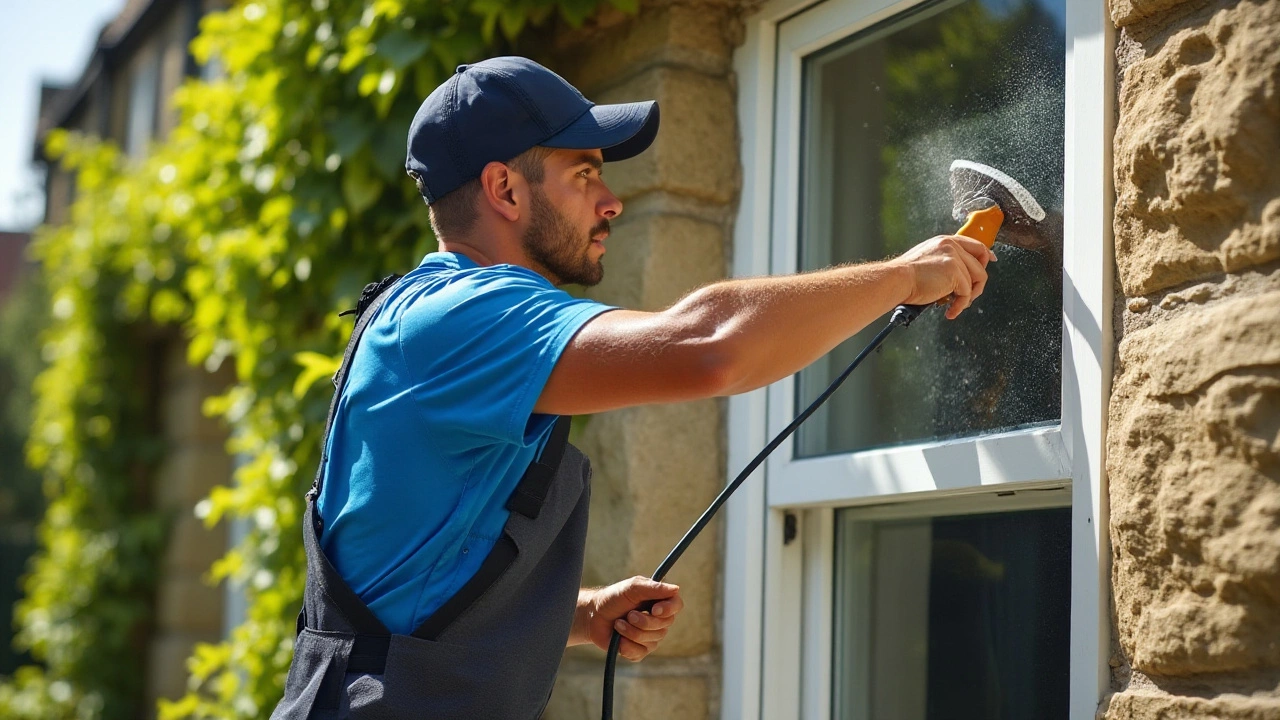In a world of sparkling glass and crystal-clear reflections, ever wonder what magicians of cleanliness, the window cleaners, keep in their trusty buckets? While it might seem like a simple quest for transparent panes, the art of window cleaning requires a well-rounded selection of tools and solutions.
For the aspiring handyman or the curious, it’s essential to unearth the key ingredients that work wonders for window cleaning. Let’s open up the bucket and explore the must-have tools, the magic of soap mixtures, and the tricks seasoned professionals use to make glass gleam. With a blend of common techniques and insider knowledge, your windows can achieve an unparalleled sheen that mirrors the world outside.
Essential Tools
At the heart of window cleaning is a wonderfully curated collection of tools, each serving a unique purpose in the pursuit of spotless glass. The cornerstone of any window cleaner's toolkit is the squeegee. This trusty device, comprised of a rubber blade attached to a handle, swiftly removes water and cleaning solution from the surface, ensuring a streak-free finish. The quality of the rubber is crucial, as softer versions allow more flexibility, particularly useful in colder climates, while more rigid variants provide durability in warmer temperatures. Maintaining the squeegee blade's condition involves regular replacement to prevent streaks caused by nicks or tears.
Besides the squeegee, a microfiber cloth or chamois finds a place in the bucket. These materials trap dust and dirt without leaving lint, and they are great for those finicky corners or post-squeegee touches. Microfiber is celebrated for its ability to clean with just water or minimal cleaning solution, making it an eco-friendly choice. An extension pole pairs well with the squeegee and cloth for reaching high windows. Modern designs feature adjustable lengths and ergonomic grips, reducing strain while you clean.
Another vital instrument is the applicator, often a sponge or cloth attached to a handle. It's used to apply the cleaning solutions evenly across the window surface. Concentrated efforts made in spreading the solution helps in breaking down grime and ensuring that every inch gets cleaned, avoiding any streaks. A sidekick to the applicator is a scraper, sometimes required for stubborn residues like paint drops or adhesive. Its usage, however, must be cautious as improper handling can scratch the glass surface.
"The right tool is half the battle won in achieving a perfect shine on windows," says John Baxter, a veteran window cleaner renowned for his expertise in commercial buildings.
For those tackling exterior windows, particularly in urban or multi-story settings, a safety belt or harness becomes indispensable. Remember, no window is worth risking your safety, so these tools are essential for any work at height. To round out the collection, a bucket of appropriate size is used not only for carrying these tools but also for the cleaning solutions. Some prefer buckets with compartments to separate dirty and clean water, adding a level of professionalism to the process.
This array of tools, aptly assembled, makes window cleaning efficient and effective. By investing in high-quality equipment and regular maintenance, both professional window cleaners and DIY enthusiasts can ensure show-stopping results every time.

The Role of Cleaning Solutions
When it comes to a window cleaner's success, much depends on the right choice of cleaning solutions. At first glance, these solutions might look like ordinary soapy water, but there's quite an alchemy involved. Professional window cleaners often select from a range of both commercial and homemade mixtures, each with its purpose and benefits. The most common concoctions typically include a base like water, mixed with detergents, vinegar, or even a few drops of ammonia. The purpose lies in breaking down stubborn residue, be it pollen, dirt, or that annoying streak of bird doodle, easily without leaving pesky streaks behind.
For many, commercial products come with the promise of effectiveness and ease of use. Most of these are crafted to ensure that each swipe of the squeegee leaves nothing but a transparent pane, thanks to the surfactants that loosen and lift dirt. Brands like Windex have long been household names due to their convenient spray bottles and reliable cleansing power. Yet, in the debate between ease and economy, homemade solutions usually have their voice. A simple yet effective mix often features water, white vinegar, and a drop of dish soap. Surprisingly, this combo can compete effectively in the window washing arena.
Now, it's worth noting, every cleaner swears by a technique or two that they've honed over years of experience. They know that window cleaning is not just about achieving cleanliness, but about preventing spots and streaks, which could mar an otherwise impeccable finish. Hence, the choice of water is another element not to be overlooked. Many experts recommend distilled water over tap, due to its lack of minerals, which can leave deposits on glass surfaces after drying. One window cleaning veteran, Dan Wagner, once remarked, "The secret's in the solution, but also the soul. It's the little tweaks you make over time."
"For beginners aiming to replicate a professional finish, starting with a well-mixed solution can make all the difference," says expert cleaner Sharon Baird. "These concoctions not only clean but prepare the glass surface for that perfect glide."
But magic doesn't create itself; a deep knowledge of what goes into those buckets does. Whether it be the choice of water or a mixer's ratio, understanding how these solutions interact with glass is key. This foundational understanding elevates the cleaner from merely washing windows to being a craftsman of clarity. In the end, it's about finding the perfect recipe suited to individual needs, specific window types, and climatic conditions.

DIY vs. Commercial Products
When it comes to window cleaning, the debate between DIY solutions and commercial products is a heated one that echoes in both households and professional circles. At the core of this discussion are the questions of efficiency, cost, and environmental impact. For those who relish the DIY spirit, concocting a cleaning elixir at home is both a satisfying and effective aisle to explore. Common household items like vinegar and baking soda have long been hailed as miraculous cleaning agents, touted for their non-toxic nature and affordability. A typical DIY window cleaning solution might involve mixing equal parts of vinegar and water, a method that many swear leaves their panes streak-free and gleaming like jewels.
Yet, commercial products offer their own brand of charm and are chosen by many for their sheer convenience and proven track record. These solutions often combine surfactants and chemicals specially crafted to break down stubborn grime and repel dust even after cleaning—a boon for households grappling with pollution or persistent smudges. Many brands offer environmentally friendly options, addressing concerns about chemical exposure and ecological impact. Names like Windex have become household staples, synonymous with efficiency and ease.
Choosing between these two options often boils down to personal preference and specific needs. DIY advocates may highlight the simplicity and transparency of home-brewed solutions, favoring the control over ingredients and the knowledge of nothing harmful lingering on their surfaces. On the other hand, commercial cleaning solutions can often save valuable time and sometimes even come with the added benefit of fragrance, leaving rooms smelling as fresh as they are clean. According to a study by the American Cleaning Institute, 70% of households juggle between both options, usually turning to DIY methods for routine maintenance and reserving commercial products for more demanding tasks.
"For many families, balancing the two approaches can offer the best of both worlds," says Dr. Emily Horan, a cleaning technology researcher. "DIY methods present an eco-friendly avenue, but during allergy seasons or in urban settings, supplementing with commercial products can significantly increase air quality and reduce allergens."
For those who are budget-conscious yet occasionally pressed for time, an alternating approach seems ideal. The up-front costs of commercial products can be offset by the knowledge that, when time is tight, reaching for a bottle is far more efficient than whipping up a solution from scratch. Still, understanding which ingredients give each approach its power can help users make informed decisions tailored to their cleaning styles. Whichever route chosen, the journey to streak-free windows needn't be paved with friction but rather celebrated for both its flexibility and ability to transform one's view on the world outside.

Tips from the Pros
When it comes to attaining that mesmerizing sparkle on your glass surfaces, there's a wealth of knowledge to be mined from those who have spent years perfecting their window cleaning craft. Experienced window cleaners often stress the importance of technique as much as the tools and solutions inside the bucket. One essential piece of advice is to always clean windows on a cloudy day. The absence of direct sunlight prevents quick drying which can lead to unwanted streaks on your glass. This ensures that window cleaning solutions have sufficient time to do their job effectively. Timing truly plays an understated role in the overall cleaning process.
Another crucial tip is adopting the right stance when wielding a squeegee. Proper posture not only enhances the cleaning efficiency but also prevents strain which is vital for professionals who wash windows for extended periods. Experts recommend positioning your body in line with the window frame and moving the squeegee in a smooth, swooping motion. Starting from the top corner and working your way down horizontally ensures that once you’ve reached the bottom, the entire pane has been covered without missing a spot.
An oft-quoted gem from veteran cleaners is the use of microfiber cloths or chamois. These are stellar when it comes to drying off any leftover moisture that the squeegee may have missed. As Michael Harris, a window cleaning veteran, once mentioned, "The choice of cloth for the final touch can make or break your effort." A good microfiber cloth not only absorbs excess water but also doesn't leave lint on the surface, ensuring a spotless finish.
Pros also dive into the potential of vinegar as a versatile cleaning solution. For those steering clear of harsher chemical options, a mixture of water and vinegar creates an effective cleaning solvent that’s gentle on the environment. Adding a splash of dish soap can amplify its efficacy, cutting through grease and grime with ease. Window washers often employ an old trick of using newspapers instead of cloth for that final wipe-down. Surprisingly, newspapers leave fewer streaks and tend to enhance the glass's shine more than conventional towels.
Understanding the type of glass you’re working with can further influence your cleaning approach. Double-glazed windows might require a gentler touch, while older panes can benefit from more vigorous scrubbing. Emphasizing these minute distinctions allows professionals to tailor their methods, ensuring consistent results despite varying and challenging conditions. Every tip reveals unique insights into the realm of window washing, where precision and patience become as pivotal as the cleaning solutions themselves.
